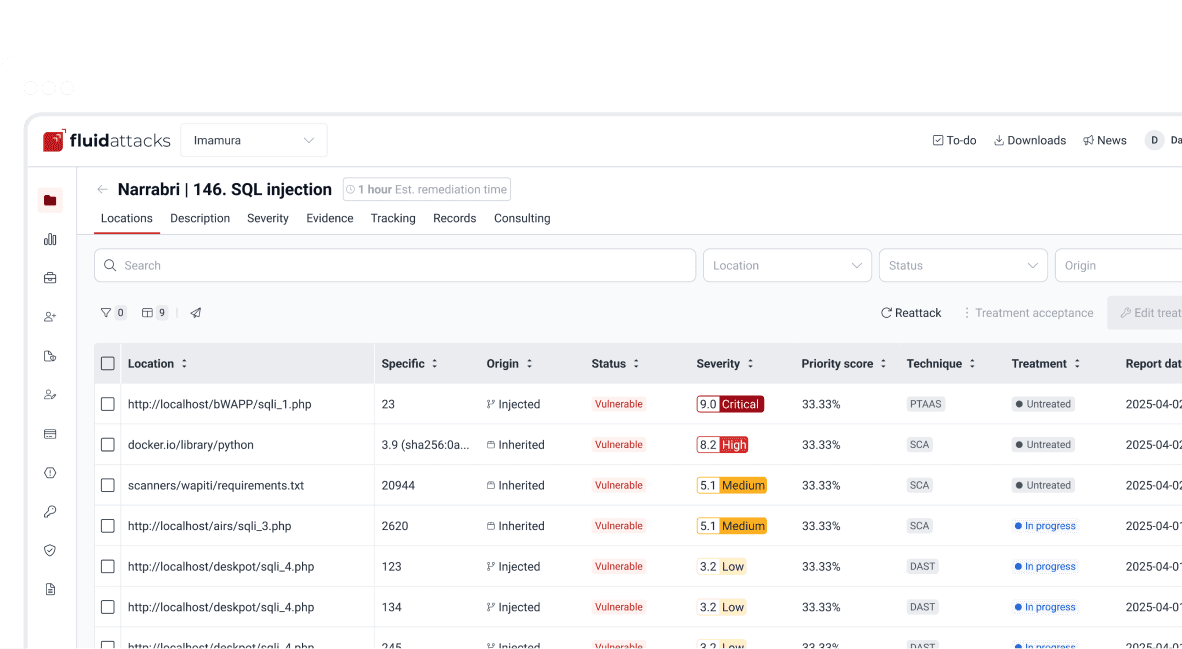Attacks
HEVD: Bypassing OS protections (kASLR + SMEP)

VP of Hacking
Updated
Sep 18, 2020
7 min
During the last posts, we’ve been dealing with exploitation in Windows Kernel space. We are using HackSys Extremely Vulnerable Driver or HEVD as the target which is composed of several vulnerabilities to let practitioners sharpen the Windows Kernel exploitation skills.
In the last post, we successfully created a DoS exploit leveraging a stack overflow vulnerability in HEVD. The DoS ocurred because we placed an arbitrary value on EIP (41414141) and when the OS tried to access that memory address, it was not accessible.
In this article, we will use that ability to overwrite EIP to execute code in privileged mode.
During the exploitation process, we will come across with Supervisor Mode Execution Prevention or SMEP which will thwart our exploit. But fear not: we will be able to bypass it.
Local vs Remote exploitation
When we were exploiting Vulnserver, we were doing remote exploitation to a user-space application. That kind of environment has certain specific restrictions, the most notorious are limited buffer space to insert our payload, character restrictions and ASLR (Address Space Layout Randomization).
When we are exploiting the Windows Kernel, it is assumed that we already have unprivileged local access to the target machine. In that environment, those restrictions are not longer a major issue. For example, the buffer space problem and character restrictions are easily circumvented by allocating dynamic memory with VirtualAlloc(), moving the raw payload to that buffer and overwriting EIP with the returned pointer.
ASLR and kASLR (Kernel ASLR) is not an issue either, because it works by randomizing the base memory of the modules at every restart, but if we have local access, there are functions in the Windows API that will reveal the current kernel base address.
However, other protections come to the scene when trying to exploit at kernel level, like DEP, SMEP, CFG, etc. We will surely come across with some of them later. Stay tuned.
Stack Overflow exploitation
We left off our previous article performing a DoS to the target machine, on where we used the following exploit:
And we were able to overwrite EIP with the value 41414141. If we are going to perform something more interesting, we must start by locating the exact offset on which EIP is overwritten. Just like on any other user-space exploitation process, we can create a cyclic pattern to find that offset. We can use mona to do that:

Then, update our exploit:
And check it:

Good, mona discovered that EIP gets overwritten starting at byte 2080.
Now, for illustration purposes, we’ll create a simple shellcode to make EAX = 0xdeadbeef. Then, we must copy it in a dynamic generated location created by VirtualAlloc(). The return value of VirtualAlloc() is a pointer that will be placed starting at byte 2081 of our buffer to divert the execution flow to our shellcode.
Let’s update our exploit with that:
If everything comes as expected, EAX will have the value 0xdeadbeef and execution will pause at the inserted breakpoint \xcc. Let’s check it:

Ouch!
Our exploit was thwarted and the error ATTEMPTED_EXECUTE_OF_NOEXECUTE_MEMORY was triggered when the first instruction of our shellcode was trying to execute. That means that SMEP did protect the kernel.
SMEP: Supervisor Mode Execution Prevention
There’s a concept called Protection rings which is used by operating systems to delimit capabilities and provide fault tolerance, by defining levels of privileges. Windows OS versions uses only 2 Current Privilege Levels (CPL): 0 and 3. CPL levels are also referred as rings. CPL0 or ring-0 is where the kernel is executed and CPL3 or ring-3 is where user mode instructions are performed.
SMEP is a protection introduced at CPU-level which prevents the kernel to execute code belonging to ring-3.
The ATTEMPTED_EXECUTE_OF_NOEXECUTE_MEMORY exception was triggered because HEVD is executing at ring-0 and after overwriting EIP, it was trying to run the instructions in our shellcode which was allocated at ring-3.
Technically, SMEP is nothing but a bit in a CPU control register, specifically the 20th bit of the CR4 control register:

To bypass SMEP, we must flip that bit (make it 0). As can be seen, the current value of CR4 with SMEP enabled is 001406e9. Let’s check what would be the value after flipping the 20th bit:

It would be 000406e9. We need to place that value on CR4 to turn off SMEP.
But, how can we do that if we are not allowed to execute instructions at ring-3? ROP comes to the rescue! We need to execute a ROP chain with instructions that are already in kernel mode. At ring-0 ROP is often referred as kROP. We then need to execute a kROP chain and change the value of CR4. With that, we should be able to make EAX = 0xdeadbeef.
In nt!KeFlushCurrentTb, we find a gadget that sets CR4 from whatever value EAX may have: mov cr4, eax # ret

Now, we need to calculate the offset of that ROP gadget from the start of the nt module:

The offset is 0011f8de. We’ll use that later.
Now we need to find a pop eax # ret gadget. We can find one at nt!_MapCMDevicePropertyToNtProperty+0x39:

And the offset from the start of the nt module is 0002bbef:

We must remember to pad our ROP chain with 8 bytes because the overflowed function epilog uses ret 8 which will return to the value pointed by ESP and then will pop 8 bytes from the stack:

With that, we can now disable SMEP!
Defeating kASLR
We’ve got all the required information to create the ROP chain to disable SMEP. However, we need to deal with kernel ASLR. As I mentioned before, there are several functions that can be executed in user mode (ring-3) that can give information of addresses at ring-0. The most used are NtQuerySystemInformation() and EnumDeviceDrivers(). The later is the simpler. With the following code, you can get the kernel base address:
And check it:

As you can see, it matches perfectly to the address reported by WinDBG:

With that, we can update our exploit, adding the ROP chain to disable SMEP, using the offsets of the gadgets and the value returned from that function to obtain absolute addresses, defeating kASLR!
Looks good. Now check it:

And this is the content of the CR4 register:

As you can see, we were able to disable SMEP and made EAX = 0xdeadbeef!
Conclusions
In this post, we were able to execute a shellcode which made EAX = 0xdeadbeef. We also bypassed SMEP protection using a kROP chain and defeated kASLR by leaking the kernel base address from ring-3. However, we have still have to get a privileged shell on this system, which will be covered in the next article.
Get started with Fluid Attacks' PTaaS right now
Other posts














